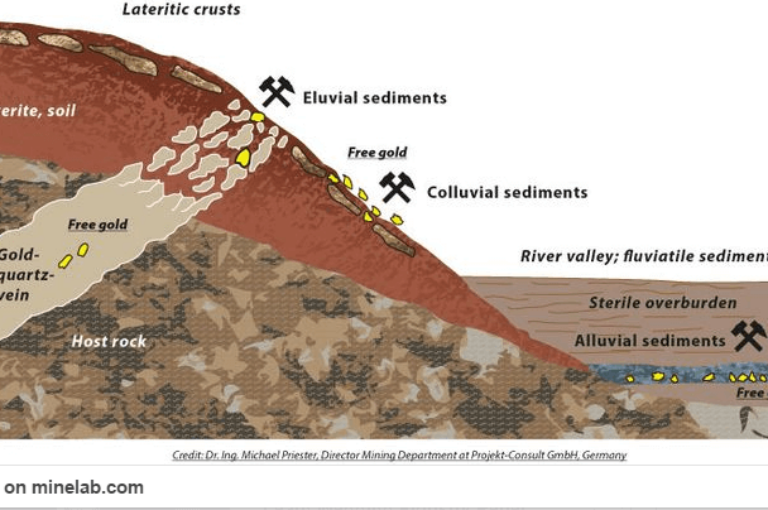Placer deposit are natural concentration of heavy minerals caused by the effect of gravity on moving particles. When heavy, stable minerals are freed from their matrix by weathering processes, they are slowly washed downslope into streams that quickly winnow the lighter matrix.
Thus, the heavy minerals become concentrated in stream, beach, and lag (residual) gravels and constitute workable ore deposits. Minerals that form placer deposits have high specific gravity, are chemically resistant to weathering, and are durable; such minerals include gold, platinum, cassiterite, magnetite, chromite, ilmenite, rutile, native copper, zircon, monazite, and various gemstones.
There are several varieties of placer deposits: stream, or alluvial, placers; eluvial placers; beach placers; and eolian placers. Stream placers, by far the most important, have yielded the most placer gold, cassiterite, platinum, and gemstones.
Primitive mining probably began with such deposits, and their ease of mining and sometime great richness have made them the cause of some of the world’s greatest gold and diamond “rushes.” Stream placers depend on swiftly flowing water for their concentration.
Because the ability to transport solid material varies approximately as the square of the velocity, the flow rate plays an important part; thus, where the velocity decreases, heavy minerals are deposited much more quickly than the light ones. Examples of stream placers include the rich gold deposits of Alaska and the Klondike, the platinum placers of the Urals, the tin (cassiterite) deposits of Malaysia, Thailand, and Indonesia, and the diamond placers of Congo (Kinshasa) and Angola.






